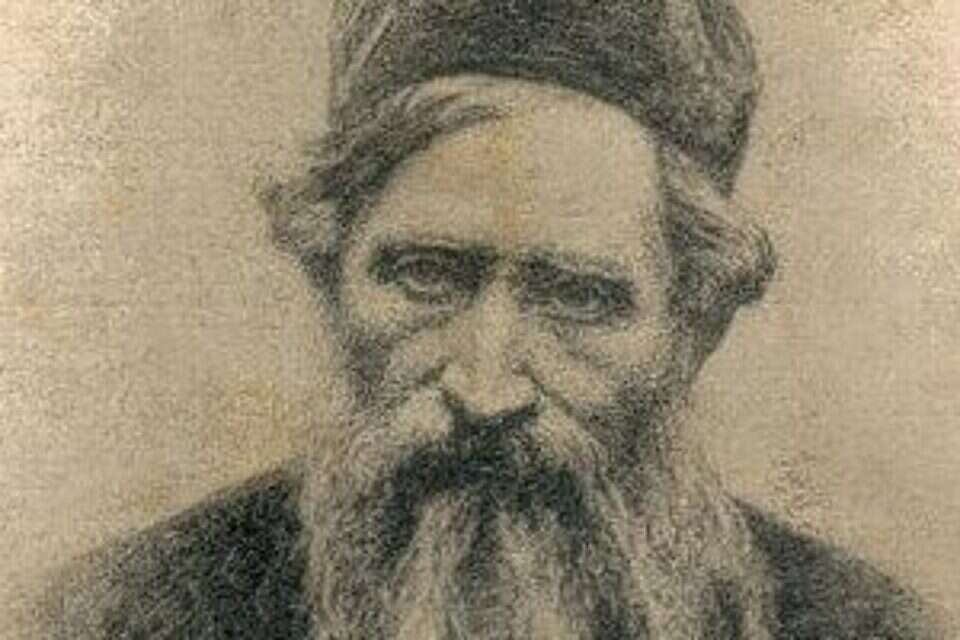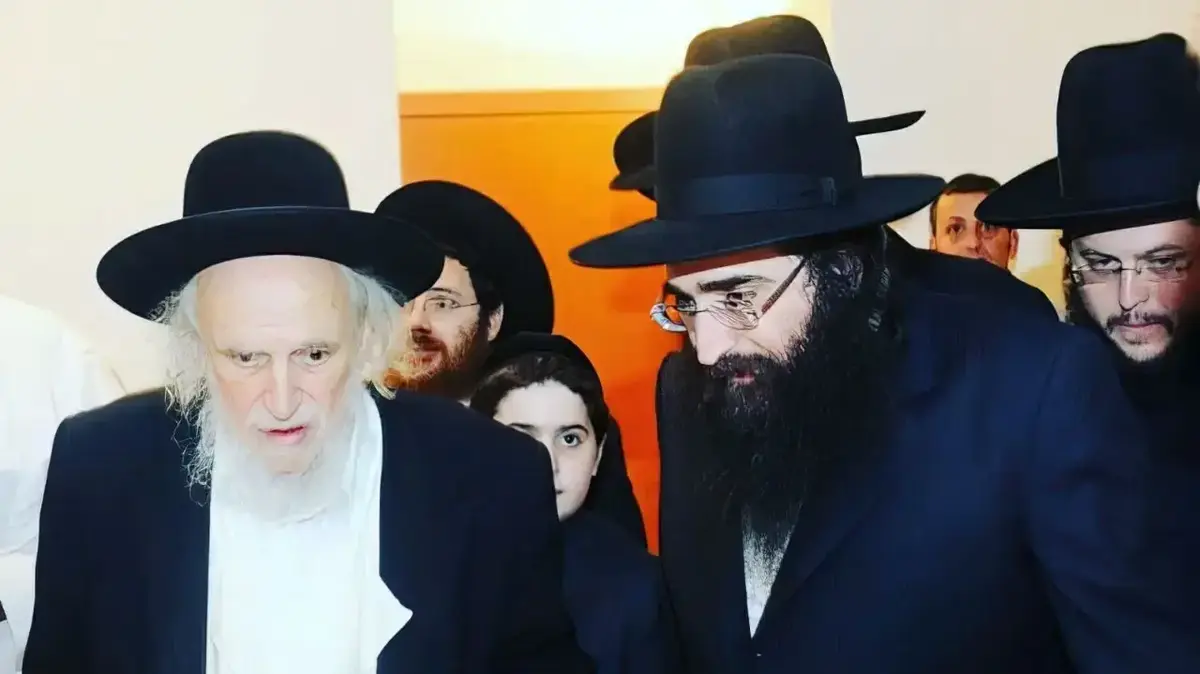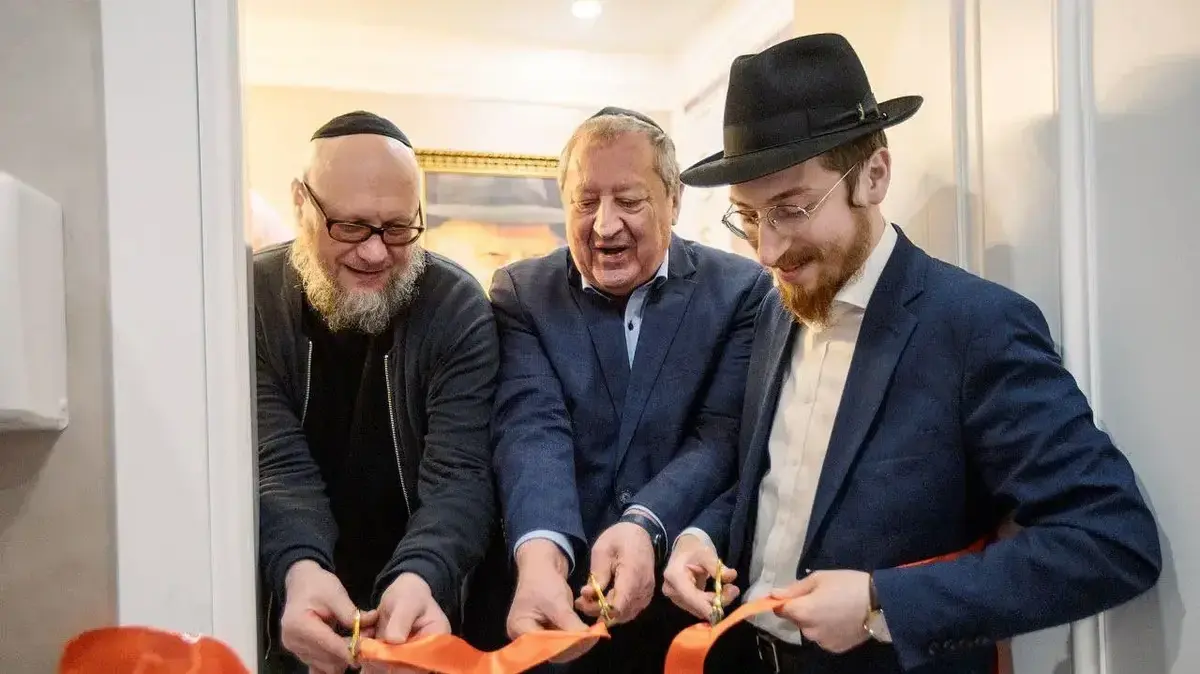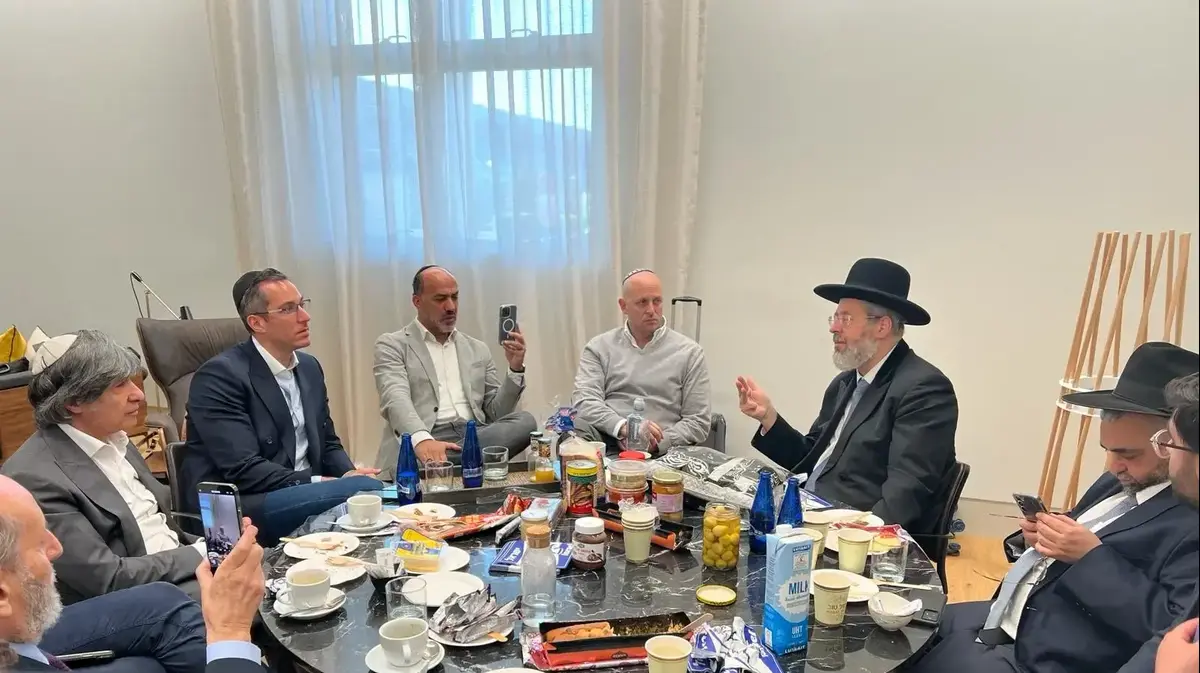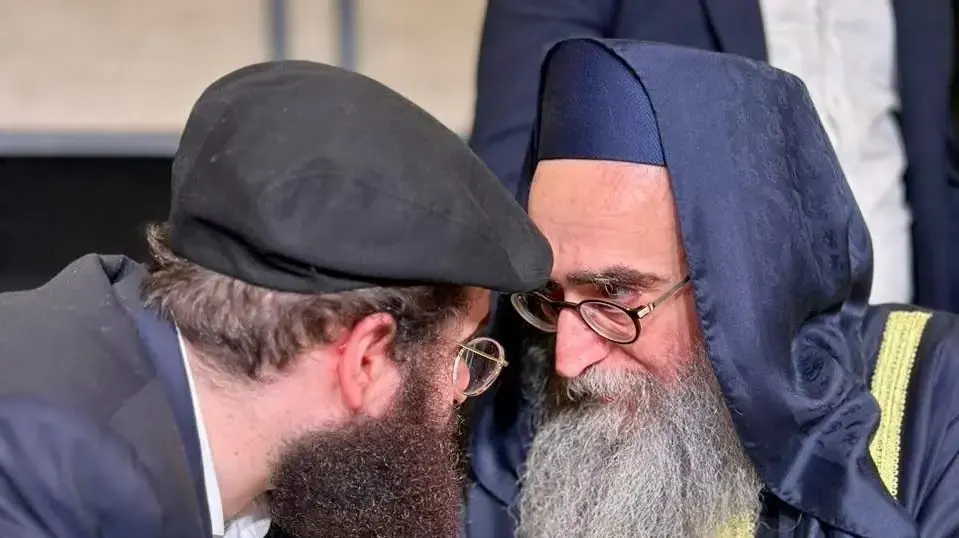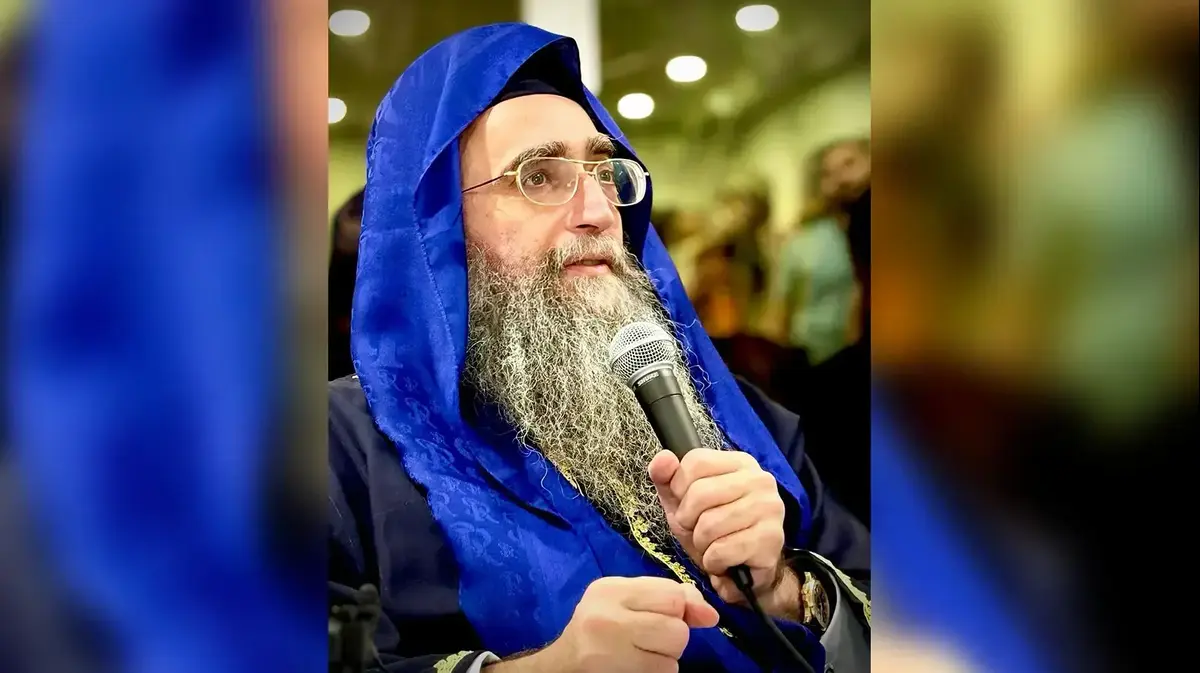In the town of Globoki, now in northern Belarus, lived a young Jewish woman who was expecting a child.
One night she had a nightmare about a fire and when she got up in a panic, her father, Rabbi Yehoshua Yaffe, reassured her and explained that this was a good sign which indicates that her son "would have a great light which would illuminate the eyes of his people."
Indeed, two days later, on April 25, 1824, Shmuel Mohliver was born, who would later become a famous rabbi and one of the leaders of religious Zionism.
Mohliver is particularly identified with the city of Bialystok and as the head of the Mizrahi (short for "spiritual center"), which was a center of unique importance to contemporary Israel and "defined itself as the spiritual center of Zionism and sought to make Israel the spiritual center of Judaism."
His grandfather's prophecy was soon fulfilled, and already at the age of 10 Samuel was considered in the globe to be a prodigy, a prodigy.
It is therefore not surprising that on his father's side he had relatives who were geniuses of the rabbinate.
Five years later, Mohliver married and, as usual, moved to his father-in-law's house for a period of three years.
He then began his studies at the famous yeshiva in the nearby town of Volozhin, where he was ordained a rabbi, and upon graduation returned to Globoki.
Despite the pleas of the local community he decided to become a linen merchant, according to one of his early biographers, Rabbi I.L.
Fishman.
However, in 1848, when he was 24, he gave up and eventually agreed to take on the role of Globuki, which he held for exactly half a century - until his death in 1898.
Mohliver worked for Globoki for six years and then spent another six years in Šakiai, west of Kaunas.
In 1860, at the age of 36, he became rabbi of the community in Suwalki, where he worked for eight years.
This was the period in which the January Revolt took place, which influenced Mohliver's worldview and opinion on emancipation.
Many of the city's Jews supported the Poles' aspirations for independence and as a result the Russians arrested about ten members of the community for supporting the rebels, and they were sentenced to execution by firing squad.
Mohliver stood before the Russian commander crying and begging for mercy and thus managed to save the Jews who had been sentenced to death.
The city of Globoki,
In his first year in Suwalki, the rabbi befriended a man who would become a central figure in the Zionist movement.
His name was Eliezer Mordechai Altshuler, who in 1881 founded the first group of Zionists in Suwalki.
In the following years, Altshuler twice traveled to Ottoman Palestine to purchase land on which he even sought to establish a Jewish settlement.
This, with the close advice and guidance of Rabbi Mohliver, who was already in Bialystok at the time.
Crystallization of a worldview
In 1868 Mohliver moved from Suwalki to Sleep, where he remained for the next fifteen years. During the time he spent there, his worldview and attitude toward storks was formed. Pretty soon the followers of Radom decided to accept Mohliver as their rebbe, that is, their spiritual leader. I.e. with those who adhered only to the Enlightenment movement and rejected Orthodoxy) and even took part in the conference of the movement held in St. Petersburg in 1873.
Rabbi Fishman explains in his biography of Mohliver that "the excessive attitude of admiration [on the part of the Hasidim towards Mohliver] caused him considerable dissatisfaction." Fishman also points out an anecdote that may have even occurred in reality: During a meeting with the Hasidim in Radom, in order to get rid of them, the rabbi exclaimed - "Rabitzin! (Yiddish: Rebbetzin) Come and eat with us," and the Hasidim reportedly hurried out of the room.
Mohliver supported the secular education of Jews and economic activity, which was and still is contrary to the Hassidic worldview, including that of modern Israel. He himself knew many Western languages and believed that one of the reasons for the troubles of the Jews in Jerusalem was that they knew neither Arabic nor French. The same goes for Jews in Central and Eastern Europe who did not know Polish, Russian and the like.
During the years he spent in Radom, Mohliver's attitude toward Zionism also took shape.
For a long time he was impressed by the views of Rabbi Kalisher and even knew his famous book "Demand for Zion".
Like him, Mohliver also saw the times in which he lived as a messianic period.
Beyond that, he devoutly read the Maggid Zionist magazine published in the Hebrew language in the city of Alec and even began writing articles for it.
In 1874 he took advantage (probably not for the last time) of the celebrations on the occasion of the 90th birthday of Moshe Montefiore, the English philanthropist who supported Jewish communities in Europe and the Levant, in order to raise money for the Jews of Jerusalem.
Indeed, the following year he sent to Jerusalem a considerable sum called Montefiore.
One of the leaders of Zionists
The outbreak of the first Zionist movement occurred during the period that Mohliver was in Radom, as a result of the pogroms that took place in the western provinces of the Russian Empire in 1881-1882. This movement is known to us as "Lovers of Zion" or "Zionism" and very quickly Mohliver became one of its most important leaders. In April 1882 he traveled to the cities of Brod and Lvov, where Jewish refugees from Russia gathered on the Habsburg side of the border, in eastern Galicia. The rabbi, who believed that this was a period of "active messianism" (Judy Myers), sought to bring as many Jews as possible to Palestine.
To this end he collaborated with Lawrence Oliphant, a Christian Zionist from Britain who came to Galicia in early April 1882 as the representative of the Lord Mayor of London, who also sought to return the Jews to Palestine.
The two joined on the basis of a common ideology and Mohliver even issued a public statement expressing support for Oliphant: "His nephews should not suspect that he intends to promote Christianity or incite our people to his faith. [...] he and his wife only hope for the fulfillment of the prophets, Because the Jews must achieve this while obeying every part of the Jewish religion "- this is what the historian Yosef Nadava quotes.
Participants in the Katowice Conference, including Rabbi Mohliver, Photo: Wikipedia
A few weeks after Oliphant's visit, two more representatives came to Brod on behalf of the Lord Mayor of London and they are the English Jews Asher Asher and Samuel Montague.
Upon their arrival, the two were not yet convinced of the purpose of Zionism, but they listened attentively to the words of Rabbi Mohliver who "tried to convince them of the righteousness of the settlement of the exiled Jews in the Land of Israel" and in time Samuel Montague became a devoted Zionist.
In May 1882, Mohliver arrived in Warsaw, where he formed a "circle of wealthy Jews who each donated 1,000 rubles for the purchase of land in Palestine." The rich, he was to immigrate to the land of his ancestors in the same year [...].
Despite this, in the summer of 1882 the Sultan banned the entry of Jews into Palestine and even banned the Tsar from leaving it. The Jewish settlements established after the first aliyah suddenly found themselves in danger, as they had not yet reached complete independence, when in the second half of 1882 Bilu collapsed, a movement of young secular Zionists from Russia and the Zionist movement was on the verge of dissolution. Rabbi Mohliver was the one who saved it Not only in Central and Eastern Europe, where he kept the movement alive by organizing many meetings and drafting various projects, but also managed to enlist Baron Rothschild's assistance for the settlement in Israel. For him a meeting with Rothschild, who listened to Mohliver's remarks and then said "Tell me what amount is required and I will give it to you."
Mohliver reached many places in Central and Eastern Europe in 1883 in an effort to prevent the disintegration of the Zionist movement.
Among other things, he visited Bialystok, where he was invited to take on the role of chief rabbi.
He did agree and as a result remained in the city until his death fifteen years later.
In the synagogue in Bialystok he preached and developed the Zionist thought established by Rabbi Zvi Hirsch Kalisher before him, and like him combined religion and modern aspirations with the definition of national identity.
The Katowice Conference
Mohliver left Bialystok in the autumn of 1884 for Katowice. On the occasion of Moshe Montefiore's 100th birthday, the leaders of the Hovevei Zion movement - Rabbi Mohliver, Leon Pinsker from Odessa, David Gordon Malek and Karpel Lipa Miyashi, Romania - decided to organize an international Zionist conference in Katowice. The International Philanthropist's birthday in late October was a convenient excuse to avoid political difficulties. However, for various logistical reasons the conference was held only in early November. It was headed by Rabbi Mohliver and Leon Pinsker, author of the renowned Zionist essay Auto-Emancipation, published in September 1882. The fact that a rabbi and a secular Jew chaired the conference perfectly illustrates the character of the Zionist movement, which combines traditional and secular Jewish principles.
From the minutes of the conference written in German, we are well acquainted with the speech of Leon Pinsker, which he delivered on November 6, the first day of the conference.
It lasts about 20-25 minutes, during which Pinsker places great emphasis on the development of agriculture in the Land of Israel.
His main contention was that "colonization should be our guiding principle from now on."
In his speech, Mohliver referred to the book of Ezekiel (Chapter 17) in which the vision of the dry bones appears: "I will bring you out of the graves, my people, and lead you to the Land of Israel ... I will give you my spirit so that you can awaken to life and I will lead you to your land ...".
Commemoration of the Rabbi of Bialystok
It is difficult to link today's Bialystok, the city where the great rabbi established the foundations of the modern Jewish state, to the story of Mohliver. The lower floors of the synagogue building that once bore his name, survived the war, but today the building stands empty and crumbling with peeling plaster, after in 2005 a sports club that operated in it was closed. From the courtyard at the back of the building you can see the arches above the windows, which characterize synagogue buildings and the back of the apse that marks the place where the ark stood, where the Torah scroll was kept.
The old synagogue built in the name of Rabbi Mohliver in 1902 stands in the center of Bialystok on Bernicekeigo Street 3. Experts from the town hall claim that the city is the official owner of the building and that there is no real obstacle to its renovation or restoration. Not only that, several years ago an architectural plan was formulated to renovate the synagogue, according to which even a new glass floor was designed, and yet the stagnation continued. Thomas Vishnevsky of the Jewish Bialystok Museum notes: "I think the wording of the project is very interesting" and explains the indifference that has sprung up around him, among other things, the lack of budget and the corona plague. At the same time, he expresses hope that the great patron of religious Zionism will be properly commemorated with the implementation of the old synagogue renovation project: "We will work to obtain the keys to the future Jewish Museum to open in Bialystok. The promise from the president has already been given." Vishnevsky will probably also take care of the commemoration of Albert Savin, the inventor of the polio vaccine, the rabbi's granddaughter (Ursula Bichkovich) and 20,000 Bialystok residents who until the early 1930s made an aliyah, including the grandson of Rabbi Mohliver, Yosef, who immigrated in 1920.
Simulation of the restoration of Rabbi Mohliver's synagogue - meanwhile the project is stuck,
In the second half of the 1980s, the activities of the Hovevei Zion movement and the first aliyah ran aground, and yet Mohliver did not give up his ambition to establish a Jewish state in the Land of Israel.
He constantly claimed that the prophecies would come true, raised money for the Jewish community, corresponded with rabbis - and also traveled and arranged for contacts with other Zionist activists.
For example, in 1886 Mohliver traveled to Vienna and married Maurice Schnirer, who in 1883, together with Natan Birnbaum and Reuven Birer, founded a group of Zionists called "Kadima".
Half a century later Schnirer recalled his visit to Rabbi Mohliver, to whom he had come to discuss matters relating to his wedding: "I forgot the rules of etiquette and took off my hat when I entered his room and held it in my left hand. The hat to my head.But the rabbi who understood my embarrassment, said quietly "Oh, it's nothing.
"An important person for Judaism as the founder of Kadima can be allowed to sin in such a sin."
The journey to the Land of Israel
Unlike his guide, Rabbi Kalisher, Rabbi Mohliver managed to visit Eretz Israel. This happened in 1890, when he first traveled from Jaffa to Jerusalem, then to Hebron and finally to the new Jewish settlements: Petah Tikva, Rishon Lezion and Zichron Yaacov. Near Jaffa, he took part in the purchase of 1,556 dunams for the establishment of a settlement called Rehovot, which was established that year by Polish Jews. His statement testified to his remarks about Bilu members and other young Zionist Jews he met in Palestine.
"I am surprised that many rabbis and devout Jews oppose the settlement of Jews in Palestine, claiming that the Jewish settlers, and especially the young ones, do not obey the religious laws," he noted.
"Even if such an accusation were true, I have long proved through rabbinic texts that God prefers his children to remain in his land, even if they do not strictly observe the tradition, while in other countries they have strictly observed it. On the tradition than Jews elsewhere.On the contrary, the Jews of Palestine are far better than the Jews elsewhere.
"I visited many colonies and found that almost all of them are conservative Jews," he said.
"Although I will admit that there were a number of Jews who espoused a certain freedom towards their religious beliefs, but such personalities can be found everywhere, and not just in Palestine. I can testify that during my stay in Palestine, I have never seen a settler publicly desecrate the Sabbath or any other custom."
The connection between lovers of Zion and Herzl's Zionism
In 1893, Mohliver, along with a number of other rabbis - including Mordechai Eliashberg, Yitzhak Nissenbaum and Yitzhak Raines - founded the Mizrachi movement.
Four years after Mohliver's death, in 1902, Rabbi Raines officially founded the Mizrahi movement as a Zionist and religious political movement, but still recognized Mohliver as its patron.
It is worth adding that the world-famous Bnei Akiva organization is in fact a youth movement that is a branch of the Mizrahi.
Mohliver supported the secular Zionism of Theodor Herzl, who in 1896 published his famous book The State of the Jews.
As an adult, the rabbi corresponded vigorously with Herzl and even planned to attend the first Zionist Congress in Basel in 1897, but due to his health condition he was represented in Switzerland by his grandson, Rabbi Yosef Mohliver, who read his grandfather's speech to the audience: We will anoint and gather all Israel scattered, and instead of wandering the earth, constantly moving from place to place, we will dwell in our land as a nation, in the full sense of the word ... We will be honored by all the peoples of the land.
On the occasion of the 50th anniversary of the founding of the Lovers of Zion organization in December 1931, a ceremony was held in Bialystok in memory of Rabbi Mohliver.
Among the participants was Rabbi Nissenbaum, who was his secretary, and even Member of Parliament Yitzhak Greenbaum, who 17 years later, together with David Ben-Gurion, signed the Israeli Declaration of Independence in May 1948.
After the prayer service at the Mohliver Synagogue at 3 Bernicekeigo Street, a procession marched toward the cemetery in the Gnovka district, where the rabbi was buried in 1898. An article published by the Jewish News Agency in 1931 noted that a commemorative plaque was unveiled at the event. 50 years before.
Surprisingly, today even the oldest citizens of Bialystok know nothing about this board.
Some have speculated that this is actually a tent (mausoleum) that ostensibly stands above the rabbi's grave, not far from the tent that still exists above the grave of Rabbi Chaim Halperin.
Rabbi Mohliver's grave in Bialystok is now empty, as his bones were transferred to Israel in 1991 and are now in Mazkeret Batya.
Gan Shmuel
There is another souvenir from Shmuel Mohliver in Israel.
This is a place near Hadera, halfway between Tel Aviv and Haifa, where there used to be an orchard of etrog trees planted in 1893 after the Bialystok conference where the Mizrahi organization was founded. Which regularly mentions the connection between religious and secular Zionism and the connection between modern Israel and its history in the city of Bialystok.
The article was written as part of the Jan Novak-Jüranski Eastern European Fund project funded by the Ministry of Foreign Affairs of the Republic of Poland.
Hebrew translation: Maya Swan
Were we wrong?
Fixed!
If you found an error in the article, we'll be happy for you to share it with us

